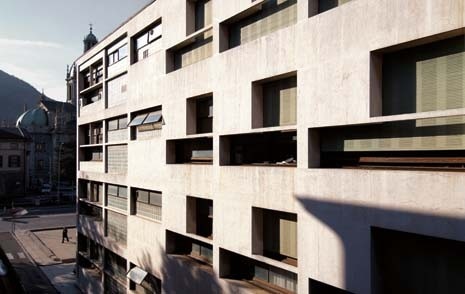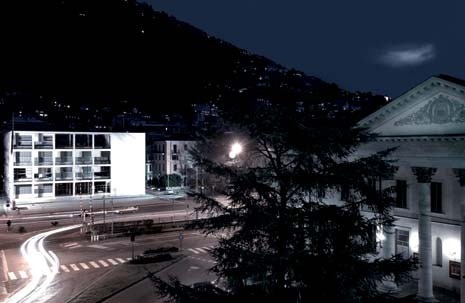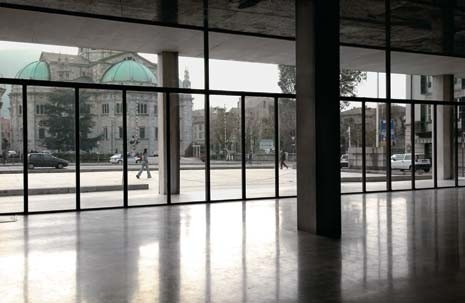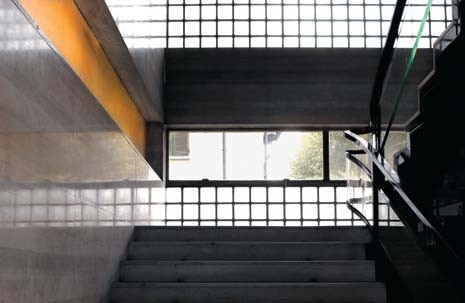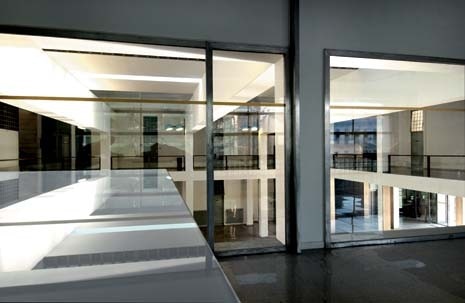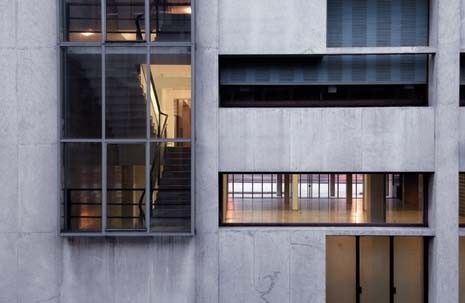Politically driven architecture has often created awkward relics of hasty pastiche that recede into the dust of history with no other distinction than bombastic bigness (such as the Vittoriale, Rome’s monument to Vittorio Emanuele II). However, some works transcend their passing political instigation, changing like a caterpillar’s chrysalis into a butterfly and becoming something else entirely. Viewing Giuseppe Terragni’s Casa del Fascio in Como (1933-36) today, 68 years of ‘time-distance’ opens a yawning gap between the present and the inauguration of that building.
Looking at an old photograph from the front page of the Como newspaper of May 7, 1936, one sees a crowd of more than 10,000 celebrating the conquest of Abyssinia and the proclamation of the ‘New Roman Empire’. Representing the rising power of the Italian fascist government in the years before the tragic bloodshed of World War II, this radical building carried its political meanings first. Now, 68 years later, the distance in time give prominence to its space, which emerges in a wordless, tragic silence. The reflective layers, the spatial flips and inversions, the mysterious overlaps, the unexpected cadence of solids and voids are all tightly integrated within its absolute half-cubic form.
Now that time’s distance reveals its space, the intensity and compression of a masterwork of architecture is haunting in its melancholic stillness. The enduring art of architecture has a tendency to be hidden; if it sticks out too soon, its spaces vanish over time. If it survives political tragedies and the passing of architectural trends, its hidden dimensions intensify and can be rediscovered, much like one rediscovers ‘new’ feelings aroused by an old poem. As the building’s original purpose and programme have vanished from the scene, the ‘events’ all become dusty parts of difficult histories, the phenomena of space, detail and light.
A light of bundled photons, a light of lumps of time, emerges with a new, mute vigour. Light within this architecture is squared off and mirrored across hollow layers of space. Each material surface – the glossy floor or the large, polished tabletop – plays its role in the overall music of this remarkable composition. Is it a perverse political light? Its reflective bounce following some questionable intention, like uttered speech recorded and replayed in loops? Now that circle of urgency is lost and in its vacuum a spatial dream is played out in an intensity approaching an ideal…like accumulating reverberations of interior spirit.
As a promise showing through a gauge, Terragni’s passion for detail shows his enthusiasm for play. To open a window, a ‘scissors jack’ extends from each jamb, pushing the flat plane of glass out from the facade. This unexpected parallel disposition has a humorous reflective effect. The cantilevered, black and chrome tube chair invented for the building has a similar surprising disjunction between seat and back.
To sit in this chair and feel the discordant jiggle between the horizontal and vertical planes is to experience Terragni’s chuckle of inventive joy. Architecture may be a means of exploring all the poignant topics of our time, politically charged issues such as the hegemony of one culture over others, the irresponsible consumption of global resources, the anti-urban consumption of landscapes in profligate sprawl, etc., etc.
But time-distance has a way of erasing urgent events – we grasp for issues that are lost in time. In that silence the intensity, the compression of absolute architecture appears.
Photographs published by kind permission of the Comitato Nazionale GT04.
